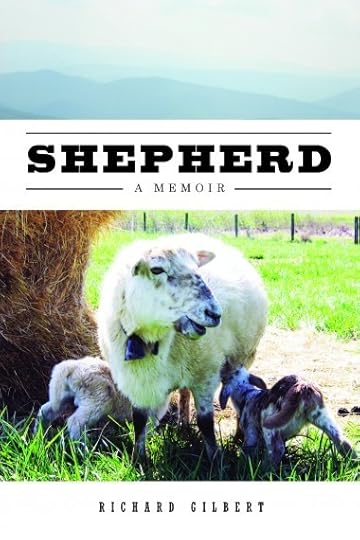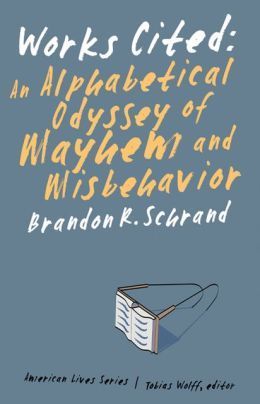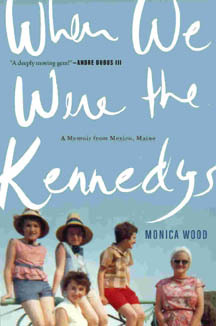Perils of persona 2.0

[A book group in Binghamton, New York, and I discuss Shepherd: A Memoir via Skype.]
Portraying yourself and family in memoir & creative nonfiction.
There will be time, there will be time
To prepare a face to meet the faces that you meet;
—T.S. Eliot, “The Love Song of J. Alfred Prufrock”
1. When readers dislike the memoirist as a character
[Freckles, then . . . ]
In life we present ourselves to others amidst their constant feedback. Body language, words, eyes that twinkle or harden. Our micro adjustments to emotional currents are constant. We’re bred to send and receive signals. On the page, though, how do you know how you’re coming across?I’ve been pondering this, as I do when I teach or write. But also because of recent events. In the first, I Skyped with Jane’s Book Group that had read my memoir. They gathered at RiverRead Books, a fine independent bookstore in downtown Binghamton, New York.
I got the sense—maybe a memoirist’s paranoia—that, like most book groups, they read mostly fiction. Which may partly explain one nice lady’s keen frustration with me as a character in the book. And look: Here’s that obtuse character in the flesh. Or at least on the computer screen. A reckoning was in order. She wanted to know how I could have done it, ignored good sense and my wife and torn down a charming little cabin on our farm? All because I didn’t want to use farmland to build a house? When we didn’t even build the house after all?
Facing this sweet, smiling, frustrated woman, I was speechless. Her issue with me then felt so personal now. My thoughts raced. I created your love for that cabin. I created that dork who tore it down. I wanted you to be frustrated with me then.
As the Bible says, humans are “born to trouble as surely as sparks fly upward.” Literature is about trouble. You can play trouble for comedy or drama, but baby you play it.
For her, it appeared, I had failed to bring off memoir’s signature quality, the dual persona. There’s the character in the midst of the action then and there’s the writer now, making sense of it and reflecting. The now aspect can be very overt: “Now I see what a stubborn ass I was.” Or it can be much more subtle, a change in voice, a shift in tone, the use of softer cues like “remembering those days.” One of the reasons that persona is such a central issue for memoirists is that readers judge memoirists, in a way they don’t novelists. Somehow the memoirist must anticipate readers’ likely response to his past and address their judgments.
An explosive reaction to Brandon Schrand’s memoir Works Cited
[Schrand: then or now?]
I’ve just fielded an explosion over persona in my freshman honors class at Otterbein University. The book in question was Works Cited: An Alphabetical Odyssey of Mayhem and Misbehavior (reviewed) by Brandon R. Schrand. He structures his story by listing alphabetically the authors he was reading as he came to manhood, from youth and high school through graduate school, in the form of an MLA Works Cited list. He presents himself as a mess who took seven years to earn his undergraduate degree. And yet, wow, quite the reader. Even in jail.Schrand’s younger self was promiscuous, had a drinking problem, sponged off his partner while lusting after other women, and had an almost-physical emotional affair even when he was married and a father. I doubt a memoirist’s persona ever works for everyone, but these seemed trip wires for my students. We also noted what a shadowy figure his wife is in comparison to women he bedded or chased. Maybe she wanted it that way?
I had felt that Schrand did address his past implicitly by portraying his younger self as a bozo. But seeing his persona through my students’ eyes made me less certain. And it made me wonder whether his innovative structure, which is why I love and why I taught the book, queered his mea culpa as it fractured (otherwise pleasingly) the portrayal of his own redemptive narrative arc. My students read Schrand at a point in the semester when they felt confident and more likely to criticize. Works Cited provoked teachable moments regarding persona, and it inspired students’ own experiments with borrowed structures (“Hermit crabs”) and segmented ones, and for that I took comfort.
Then they further surprised me by urging me to have future classes read Works Cited.
“I still like Schrand’s book,” said a guy appalled by Schrand’s “sexist attitudes” toward women.
“I know people like that,” said a girl who also rose to the book’s defense. “He’s a jerk but he’s honest. I think it’s good to read a writer we don’t like.”
In their interpretation, Schrand hadn’t failed to bring off a retrospective persona to limn his younger self—he’d accurately portrayed himself then and now as a clod. I don’t know the man, so I can’t say what he’s like. But I admire his honesty in Works Cited, and I believe he changed—this memoir being Exhibit A. The only way to test my theory that his somewhat implicit dual persona succeeds (for adults) is to have a class of returning students or a gimlet-eyed book group read it and see what other geezers say. In that case, my hypothesis is that how he’s interpreted will depend largely on how many of the women readers once dated their own boy Schrands.
It’s about the honesty, stupid
[Exquisite—except for teens?]
Eighteen-year-olds are a tough, somewhat unpredictable crowd. It’s always a challenge to come up with a slate of memoirs that both they and I will adore. There’s a difference between teen/twentysomething taste and middle-aged taste. I’ve found there’s even a gap between memoirs freshmen and upperclassmen prefer.And I’ve noticed that these freshmen, sensitized to persona by my harping on it, are apt to resent a writer for trying too hard to sell his interpretation of his past self. Though their fondness for any particular memoir has varied, the most popular so far have been Alison Smith’s Name All the Animals () and Darin Strauss’s Half a Life (reviewed). They loved Name All the Animals not only because they could relate to its same-age heroine but because of her very subtle “now” persona. Hers is the classic “reads like a novel” memoir. In contrast, Strauss employs a dominant “now” stance, but the plight of his younger self—who accidentally killed a high school classmate—makes that distance seem necessary as well as rendering the horror more palatable. At least he’s together enough now to write about it.
My biggest disappointment this semester hasn’t been Works Cited, which at least woke up students, but their lukewarm reaction to Monica Wood’s exquisite When We Were the Kennedys: A Memoir from Mexico, Maine. Although she portrays herself as a child, in the wake of her father’s death and then after the Kennedy assassination, her dominant persona, the writer looking back, may be too middle-aged for eighteen year olds. And I’ve seen this blah reaction before with a boomer-era memoir; students seemingly can’t relate to those times—or are sick of boomer nostalgia. Persona is complex and subtle yet has a big effect in all this.
This week as I read their own second memoir essays of the semester, the persona issue dropped into further context for me. Their memoirs varied greatly in subject and in treatment, comic or dramatic, but shared the quality of feeling emotionally honest. And that honesty seemed so brave. I could not help but admire it. And I felt surprisingly moved—once again—by their life stories.
When you are emotionally honest you make yourself vulnerable. Readers notice. My students’ work in the wake of our readings underscored this signature aspect of memoir: its demand that the writer be and seem honest in telling his story. Whether the writer “now” is implicit or overt, imperative to the genre is the truth-telling narrator. And maybe the larger point is that authenticity is an imperative for our species, a key value embedded in our DNA.
We expect emotional honesty from our partners and closest friends. When a writer, making art from her experience, is emotionally honest with unknown readers, she’s offering a gift to the world.
[Next: 2. When memoirists worry about portraying family members.]






